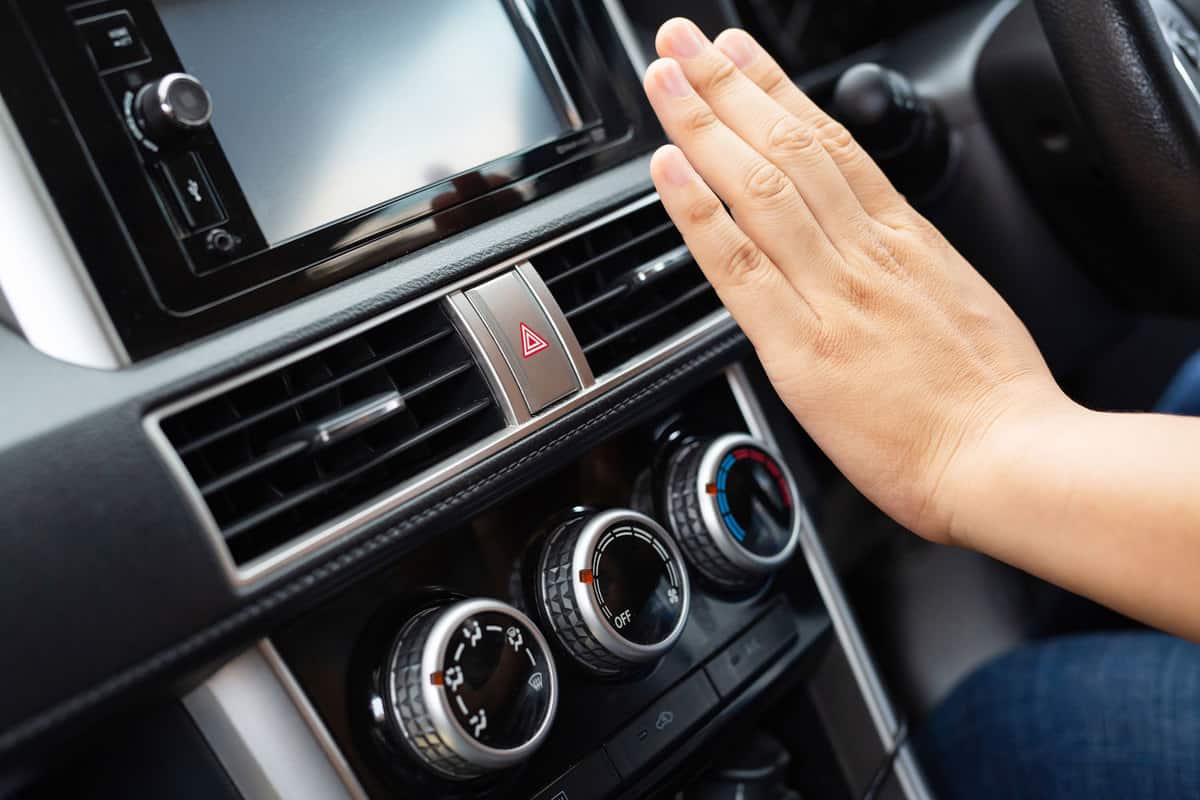

Articles
Car Squeals When AC Is On
Modified: May 6, 2024
Learn why your car squeals when the AC is on in our informative articles. Discover helpful tips and solutions to fix this common issue.
(Many of the links in this article redirect to a specific reviewed product. Your purchase of these products through affiliate links helps to generate commission for Storables.com, at no extra cost. Learn more)
Introduction
The sound of a car squealing when the AC is turned on can be quite unnerving. Not only does it disrupt the peace and quiet inside the vehicle, but it also raises concerns about the health of the car’s air conditioning system. Understanding the causes behind this squealing noise can help car owners diagnose and address the issue promptly, ensuring a comfortable and hassle-free driving experience.
The car’s AC system plays a crucial role in keeping the cabin cool and comfortable, especially during hot summer months. It relies on various components working together harmoniously, and any disruption in this system can lead to performance issues or unusual noises. In the case of a car squealing when the AC is turned on, several potential causes need to be considered.
One common cause of the squealing noise is a worn-out belt. The AC system is powered by a belt that connects the engine’s crankshaft to the AC compressor. Over time, this belt can become worn or damaged, leading to squealing sounds. Another possible cause is a loose belt tension, which can cause the belt to slip and produce the undesirable noise.
Another cause of the squealing noise is an overworked compressor. When the AC is turned on, the compressor works to pressurize and circulate the refrigerant, which can increase the load on the system. This increased workload can put stress on the components, leading to squealing noises.
A faulty AC clutch can also be the culprit behind the squealing noise. The AC clutch engages and disengages the compressor as needed. If the clutch is damaged or worn out, it may not engage properly, resulting in the squealing sound.
Low refrigerant levels can also contribute to the squealing noise. When the AC system is low on refrigerant, it may struggle to circulate the proper amount, causing strain on the components and leading to squealing sounds.
Lastly, damaged AC belt pulleys can cause the belt to slip and produce a squealing noise. The pulleys provide the necessary tension for the belt and ensure proper operation. If any of the pulleys are damaged or misaligned, it can result in a squealing noise.
Now that we have identified some possible causes of a car squealing when the AC is turned on, it’s important to explore troubleshooting and solutions to address the issue effectively. By diagnosing the problem and taking appropriate actions, car owners can regain a smooth and quiet AC operation.
Key Takeaways:
- Don’t ignore the squealing! Address worn belts, loose tension, and overworked compressors promptly to restore a peaceful and efficient driving experience with your car’s AC system.
- Regular maintenance is key! Keep an eye on refrigerant levels, AC clutch functionality, and belt pulley condition to prevent squealing and ensure a smooth, quiet AC operation.
Read more: Car Jerking When AC Is On
Understanding the Car AC System
Before diving into the possible causes of a car squealing when the AC is turned on, it’s essential to have a basic understanding of how the car’s AC system functions. The car’s AC system is a complex system composed of several key components that work together to cool and dehumidify the interior air.
The primary components of the car’s AC system include the compressor, condenser, evaporator, expansion valve, and various sensors and switches. The AC system relies on the circulation of refrigerant to absorb heat from the cabin and release it to the outside environment.
The AC compressor is often referred to as the heart of the AC system. It is a belt-driven pump responsible for compressing the refrigerant and maintaining the proper pressure within the system. The compressor receives power from the engine through a drive belt and is activated when the AC is turned on.
The refrigerant, typically a substance called R-134a, is responsible for absorbing heat from the cabin air. It circulates through a closed-loop system, changing between liquid and gas states as it travels through the various components.
The condenser is located at the front of the vehicle and facilitates the release of heat absorbed by the refrigerant. It works similarly to a radiator and relies on airflow, either from the vehicle’s forward motion or electric fans, to dissipate the heat accumulated in the refrigerant.
The evaporator, on the other hand, is located inside the vehicle and serves to cool the interior air. As the refrigerant expands and changes from a high-pressure liquid to a low-pressure gas, it absorbs heat from the cabin air, resulting in a cooling effect.
The expansion valve, also known as the metering device, controls the flow of refrigerant into the evaporator. It regulates the amount of refrigerant entering the evaporator, ensuring proper cooling and dehumidification of the air.
In addition to these main components, the AC system also features various sensors and switches to monitor and control its operation. These include the AC pressure switch, which protects the system from high or low pressures, and the AC clutch, which engages and disengages the compressor as needed.
With a basic understanding of how the car’s AC system works, we can now explore the possible causes of a car squealing when the AC is turned on. By identifying these causes, car owners can take the necessary steps to diagnose and resolve the issue, ensuring optimal performance of their AC system.
Possible Causes of Car Squealing When AC Is On
When a car squeals when the AC is turned on, it could indicate a problem with one or more components in the AC system. Understanding the potential causes of this issue will help car owners diagnose and address the problem effectively. Here are some common culprits:
- Worn Belt: Over time, the belt that drives the AC compressor can become worn or frayed. This wear can cause the belt to slip or produce a squealing noise when the AC is turned on.
- Loose Belt Tension: If the belt tension is not properly adjusted, it can cause the belt to slip and produce a squealing sound. Over time, the belt tensioner or pulleys may become loose, leading to this issue.
- Overworked Compressor: When the AC system is running continuously or under heavy load, it can put excessive strain on the compressor. This strain can cause the compressor to make a squealing noise when it becomes overworked.
- Faulty AC Clutch: The AC clutch engages and disengages the compressor as needed to maintain the desired cooling level. If the clutch is faulty or damaged, it may not engage properly, leading to a squealing noise when the AC is turned on.
- Low Refrigerant Levels: Insufficient refrigerant levels can cause the AC system to work harder to cool the cabin. When the system is low on refrigerant, it may produce a squealing noise due to increased strain on the compressor and other components.
- Malfunctioning AC Belt Pulleys: The belt pulleys ensure proper tension on the AC belt and contribute to the smooth running of the system. If any of the pulleys are damaged, misaligned, or worn, they can cause the belt to slip and produce a squealing noise.
It’s important to note that multiple causes can contribute to the squealing noise when the AC is turned on. Therefore, a thorough inspection and troubleshooting process may be necessary to identify and address the specific issue.
In the next section, we will explore troubleshooting methods and potential solutions to resolve the car squealing when the AC is turned on, allowing car owners to enjoy a quiet and comfortable AC operation.
Worn Belt
A worn belt can be a common cause of a car squealing when the AC is turned on. The belt that drives the AC compressor can deteriorate over time due to regular use and exposure to heat and friction. As the belt wears down, it can develop cracks, fraying, or glazing, which can result in a squealing noise when the AC system is activated.
When the belt becomes worn, it loses its grip on the compressor pulley, leading to slippage. This slippage causes the belt to generate a high-pitched squealing sound as it struggles to maintain proper contact with the pulley, reducing its efficiency in powering the compressor. The noise is often more noticeable when the AC is turned on because the compressor requires more power to function.
Regular inspection of the belt is crucial to catch any signs of wear or damage early on. One way to check for a worn belt is to visually inspect its condition. Look for cracks, fraying edges, or any signs of glazing. If the belt appears worn, it is recommended to replace it to prevent further issues and avoid potential belt failure.
Replacing a worn belt is a relatively simple process that can be done with basic tools. Begin by locating the belt tensioner, which is a spring-loaded component designed to keep the belt at the proper tension. Use a wrench or belt tensioner tool to release the tension on the belt, allowing for easy removal. Take note of the belt’s routing before removing it to ensure proper installation of the new belt.
When installing a new belt, it’s important to ensure the correct size and type are used for your specific vehicle make and model. Consult your vehicle’s manual or an expert to obtain the correct belt specifications. Properly route the new belt around the various pulleys, making sure it is seated firmly and aligned with the grooves of the pulleys.
After installing the new belt, use the belt tensioner tool or wrench to apply tension to the belt. Ensure the tension is within the manufacturer’s recommended range, as excessive tension can strain the components and cause premature wear or failure.
Regular maintenance of the belt, including periodic inspections and timely replacements, can help prevent squealing noises and ensure the longevity and reliability of the entire AC system. By addressing a worn belt promptly, car owners can enjoy a quiet and efficient AC operation.
Loose Belt Tension
A loose belt tension is another possible cause of a car squealing when the AC is turned on. The belt that drives the AC compressor needs to be properly tensioned to function effectively. Over time, the belt tensioner or pulleys can become loose, causing the belt to slip and produce a squealing noise.
When the belt tension is not properly adjusted, it may not provide enough grip on the compressor pulley, leading to slippage. As a result, the belt will produce a high-pitched squealing sound as it slips and struggles to maintain contact with the pulley during AC operation.
To check for loose belt tension, start with a visual inspection. Look for any signs of misalignment or looseness in the belt and pulleys. A belt that appears to be loose or is visibly slipping during operation is an indication that the tension is not correct.
To address a loose belt tension, you may need to adjust the tension or replace the belt tensioner. Consult your vehicle’s manual or seek professional assistance to ensure the proper adjustment technique for your specific make and model.
If adjustment is necessary, locate the belt tensioner, which is typically a spring-loaded component designed to maintain the proper tension in the belt. Depending on the system, there may be an adjustment bolt or a separate adjustment mechanism on the tensioner. Use the appropriate tool or wrench to tighten or loosen the tensioner as needed.
When adjusting the belt tension, be cautious not to overtighten as it can cause excessive strain on the belt and other components. Conversely, if the belt tension is too loose, it may continue to slip and produce the squealing noise. Aim for the manufacturer’s recommended tension range for optimal performance.
In some cases, a loose belt tension may be due to a faulty belt tensioner. If the tensioner is worn, damaged, or unable to maintain proper tension, it may need to be replaced. Again, refer to your vehicle’s manual or consult a professional for guidance on replacing the belt tensioner.
By addressing and correcting a loose belt tension, car owners can eliminate the squealing noise when the AC is turned on and ensure that the AC system operates smoothly and efficiently. Regular maintenance, including periodic checks and adjustments of the belt tension, is recommended to prevent issues and ensure the longevity of the AC system.
Read more: Car Overheats When AC Is On
Overworked Compressor
An overworked compressor can be a potential cause of a car squealing when the AC is turned on. The AC compressor is responsible for pressurizing the refrigerant and circulating it through the system to cool the cabin air. When the AC system is running continuously or under heavy load, it can put excessive strain on the compressor, leading to a squealing noise.
There are several reasons why a compressor may become overworked. One common scenario is running the AC system at maximum cooling for extended periods, especially in hot weather conditions. In such situations, the compressor operates continuously, without adequate breaks to cool down. This can lead to increased heat buildup and stress on the compressor, resulting in a squealing noise.
Another factor that can contribute to an overworked compressor is a restricted or clogged condenser. The condenser plays a crucial role in releasing heat absorbed by the refrigerant. If the condenser is obstructed by dirt, debris, or external factors, it can hinder proper heat dissipation. As a result, the compressor has to work harder to maintain the desired cooling level, leading to strain and potential squealing noise.
To address an overworked compressor, it is important to provide adequate breaks for the system to cool down. Instead of running the AC system at maximum cooling continuously, consider using the “auto” or “economy” mode, which allows for intermittent cooling cycles to give the compressor time to rest.
Regular maintenance is crucial to ensure proper airflow and heat dissipation in the AC system. Keep the condenser clean by periodically removing any debris, leaves, or dirt that may hinder its performance. Use a gentle stream of water or a soft brush to clean the condenser fins, being careful not to damage them. Additionally, ensure there is no obstruction around the condenser, such as aftermarket accessories or debris that restricts airflow.
If the squealing noise persists despite giving the compressor breaks and maintaining proper airflow, it may indicate a more significant issue with the compressor itself. In such cases, it is recommended to have a professional technician inspect and diagnose the problem to determine if repairs or replacement are necessary.
By addressing and resolving an overworked compressor, car owners can eliminate the squealing noise and ensure the proper functioning and longevity of the AC system. Regular maintenance and providing adequate cooling breaks for the compressor are key to keeping the system running smoothly and efficiently.
Faulty AC Clutch
A faulty AC clutch can be a potential cause of a car squealing when the AC is turned on. The AC clutch is responsible for engaging or disengaging the compressor as needed to maintain the desired cooling level. If the clutch is faulty or damaged, it may not engage properly, resulting in a squealing noise when the AC system is activated.
When the AC is turned on, the AC clutch is typically activated by an electromagnetic coil. This engages the clutch, allowing it to connect the rotating pulley to the compressor shaft, which in turn drives the compressor. If the clutch fails to engage or does so improperly, it can cause slippage between the pulley and the compressor, resulting in the squealing noise.
There are several potential reasons for a faulty AC clutch. Over time, the clutch bearings can wear out or become damaged, preventing proper engagement. Additionally, the clutch coil or wiring can develop faults, leading to erratic or insufficient power delivery to the clutch.
To diagnose a faulty AC clutch, it is recommended to visually inspect the clutch assembly. Look for any signs of physical damage, such as cracks or worn-out bearings. Additionally, check the wiring connections to ensure they are secure and not damaged.
If a faulty AC clutch is identified, it may need to be repaired or replaced. It is recommended to consult a professional technician, as working on the AC clutch requires specialized tools and knowledge. The technician will be able to diagnose the specific issue and determine if the clutch can be repaired or if a replacement is necessary.
Repairing a faulty AC clutch may involve replacing worn-out bearings, fixing electrical connections, or addressing any other related component issues. If a replacement is needed, it is crucial to select a compatible and high-quality clutch assembly that matches the specifications of the vehicle’s AC system.
By addressing and resolving a faulty AC clutch, car owners can eliminate the squealing noise and ensure that the AC system operates properly. Regular inspection and maintenance of the clutch assembly, as well as prompt repairs if any issues arise, will contribute to the longevity and reliable performance of the AC system.
Low Refrigerant Levels
Low refrigerant levels can be a potential cause of a car squealing when the AC is turned on. The refrigerant is a crucial component in the AC system, responsible for absorbing heat from the cabin air and cooling it down. When the AC system is low on refrigerant, it can struggle to circulate the proper amount, leading to increased strain on the compressor and other components, resulting in a squealing noise.
There are several reasons why the refrigerant levels may become low in the AC system. One common cause is a refrigerant leak. Over time, seals, hoses, or other components in the AC system can develop leaks, allowing the refrigerant to escape. This gradual loss of refrigerant can lead to a decrease in cooling efficiency and cause strain on the system.
Another possible reason for low refrigerant levels is an inadequate initial charge or improper handling during maintenance or repairs. If the AC system was not filled with the correct amount of refrigerant when it was initially charged or if there was a mistake during a repair or recharge, it can result in low refrigerant levels.
To determine if low refrigerant levels are causing the squealing noise, it is recommended to have the AC system inspected by a professional technician. They will be able to perform a pressure test or use a refrigerant leak detector to check for any leaks in the system. If a leak is detected, the technician will need to address the leak and recharge the AC system with the correct amount of refrigerant.
Repairing a refrigerant leak typically involves identifying the source of the leak and replacing the damaged component. This can include replacing faulty seals, hoses, or other AC system components. After repairing the leak, the AC system will need to be recharged with the proper amount of refrigerant to ensure optimal performance.
Regular maintenance and periodic AC system inspections are key to detecting and addressing low refrigerant levels promptly. By maintaining the proper refrigerant levels, car owners can prevent squealing noises, ensure efficient cooling, and prolong the lifespan of their AC systems.
Damaged AC Belt Pulleys
One of the potential causes of a car squealing when the AC is turned on is damaged AC belt pulleys. The belt pulleys play a crucial role in maintaining the tension and proper operation of the AC belt. If any of the pulleys are damaged, misaligned, or worn, they can cause the belt to slip and produce a squealing noise.
There are several reasons why AC belt pulleys may become damaged or worn. Over time, the constant movement and friction can cause the pulleys to wear down. Additionally, exposure to contaminants or debris can lead to damage or misalignment of the pulleys, affecting their performance.
To diagnose damaged AC belt pulleys, a visual inspection is necessary. Look for any signs of wear, such as visible cracks, grooves, or rough edges on the pulleys. Check for proper alignment of the pulleys as well, ensuring they are parallel to each other and in line with the belt’s path.
If damaged AC belt pulleys are identified, they may need to be repaired or replaced. It is recommended to consult a professional technician for an accurate assessment and to perform the necessary repairs or replacements.
Repairing damaged AC belt pulleys may involve cleaning, lubricating, or realigning them if the damage is minimal. In cases where the damage is severe or the pulleys are heavily worn, replacement may be necessary. It is important to ensure that the replacement pulleys are of the correct size and type for your specific vehicle model.
During the replacement process, it is important to take note of the proper routing and alignment of the belt. Ensure that the new pulleys are securely mounted and aligned with the belt’s grooves, preventing any slipping or misalignment that can lead to squealing noises.
Regular inspection of the AC belt pulleys, along with proper maintenance, can help prevent issues caused by damaged pulleys. Cleaning the pulleys regularly and keeping them free from debris can extend their lifespan and reduce the likelihood of squealing noises when the AC is turned on.
By addressing and resolving damaged AC belt pulleys, car owners can eliminate the squealing noise and ensure the smooth and efficient operation of their AC systems. Regular maintenance and prompt repairs are essential to keep the pulleys in good condition and maintain the integrity of the AC belt system.
Check the serpentine belt for wear and proper tension. A worn or loose belt can cause squealing when the AC is on. If needed, replace the belt and adjust the tension to resolve the issue.
Read more: Car Making Noise When AC Is On
Troubleshooting and Solutions
When a car squeals when the AC is turned on, troubleshooting the issue and finding the appropriate solution is essential to restore a quiet and smoothly functioning AC system. Here are some troubleshooting steps and potential solutions to address the squealing noise:
- Inspect and Replace Worn Belts: If the squealing noise is caused by worn or damaged belts, visually inspect them for signs of wear, cracks, or fraying. Replace any worn belts with new ones of the correct size and type.
- Adjust Belt Tension: Check the tension of the AC belt. If it is loose, use the appropriate tools to adjust the belt tensioner or replace the tensioner if necessary.
- Give the Compressor a Break: Avoid running the AC system continuously at its maximum cooling setting. Use the “auto” or “economy” mode to allow the compressor regular breaks to prevent overworking and excessive heat buildup.
- Repair or Replace AC Clutch: If the AC clutch is faulty or damaged, have it repaired or replaced by a professional technician to ensure proper engagement of the compressor and eliminate squealing noises.
- Check and Refill Refrigerant Levels: Have a professional technician check the refrigerant levels in the AC system. If it is low, locate and repair any leaks, then recharge the system with the appropriate amount of refrigerant.
- Repair or Replace Damaged Belt Pulleys: Inspect the AC belt pulleys for any signs of damage or misalignment. Repair or replace them as necessary to ensure proper belt tension and alignment.
It is important to note that the troubleshooting steps and solutions may vary depending on the specific cause of the squealing noise. It is recommended to consult a professional technician for a thorough diagnosis and accurate assessment of the issue.
Additionally, regular maintenance and preventive measures can help prevent squealing noises and keep the AC system in good working condition. This includes periodic inspections, cleaning of the condenser and belt pulleys, and ensuring proper refrigerant levels.
By troubleshooting and implementing the appropriate solutions, car owners can address the squealing noise and ensure a quiet, efficient, and reliable AC system for a comfortable driving experience.
Inspect and Replace Worn Belts
One of the primary troubleshooting steps for addressing a car squealing when the AC is turned on is to inspect and replace worn belts. Over time, the belt that drives the AC compressor can become worn or damaged due to regular use, exposure to heat, and friction. This wear and tear can cause the belt to slip or produce a squealing noise when the AC system is activated.
Inspecting the belts for signs of wear is the first step in diagnosing the issue. Visual inspection involves looking for cracks, fraying edges, glazing, or any other visible signs of deterioration. Pay particular attention to the condition of the ribs on the belt, as these are critical for proper traction on the pulleys.
If any of the belts appear worn or damaged, they should be promptly replaced. It is important to use belts that are specifically designed for the make and model of your vehicle, ensuring the correct size and type. Consult your vehicle’s manual or seek expert advice to obtain the appropriate replacement belts.
Replacing worn belts is a relatively straightforward process that can be done with basic tools. Here are the general steps to follow:
- Locate the belt tensioner, which is typically a spring-loaded component designed to maintain proper tension on the belt.
- Use a wrench or belt tensioner tool to release the tension on the belt, which will allow for easy removal.
- Take note of the belt’s routing before removing it to ensure proper installation of the new belt.
- Install the new belt by routing it around the various pulleys, making sure it is seated firmly and aligned with the grooves of the pulleys.
- Use the belt tensioner tool or wrench to apply tension to the belt, ensuring it falls within the manufacturer’s recommended range.
It is important to ensure the proper tension on the belt, as both excessive and insufficient tension can lead to issues. Excessive tension can strain the belt and other components, while insufficient tension can cause the belt to slip and produce the squealing noise.
Regular maintenance of the belts, including periodic inspections and timely replacements, is crucial to prevent squealing noises and ensure the longevity and reliability of the entire AC system. By addressing worn belts promptly, car owners can enjoy a quiet and efficient AC operation.
Adjust Belt Tension
When dealing with a car squealing when the AC is turned on, adjusting the belt tension can be a crucial step in troubleshooting the issue. If the AC belt tension is not properly adjusted, it can cause the belt to slip, resulting in a squealing noise during AC operation.
To adjust the belt tension, you will need to locate the belt tensioner. The belt tensioner is typically a spring-loaded pulley designed to maintain the proper tension on the belt. It ensures that the belt has enough grip on the pulleys to transfer power effectively.
Start by identifying the belt tensioner. Refer to your vehicle’s manual or consult a professional technician if you are unsure about the exact location. Once located, familiarize yourself with the type of tensioner in your vehicle—whether it requires a wrench or a specialized belt tensioner tool for adjustment.
When adjusting the belt tension, it is essential to strike a balance. Excessive tension can strain the belt and other components, leading to premature wear and potential damage. On the other hand, insufficient tension can cause the belt to slip and result in a squealing noise.
Here are the general steps to adjust the belt tension:
- Identify the appropriate tension adjustment point on the tensioner. This could be a bolt or a specific mechanism designated for tension adjustment.
- Use the appropriate tool or wrench to either tighten or loosen the tensioner. The exact direction for adjustment depends on the specific tensioner design.
- Gradually increase or decrease the tension until it falls within the manufacturer’s recommended range. Consult your vehicle’s manual or seek professional guidance to determine the proper tension range.
- After adjusting the tension, check the belt for proper alignment and tension by visually inspecting its position on the pulleys.
- Test the AC system to ensure that the squealing noise is no longer present. If the noise persists, further adjustment or other troubleshooting steps may be necessary.
It is important to note that different vehicle models may have slightly different procedures for adjusting belt tension. Therefore, it is recommended to consult your vehicle’s manual or seek guidance from a professional technician to ensure accurate adjustment.
Regular maintenance of belt tension is crucial to prevent squealing noises and maintain the longevity of the AC system. Periodically checking and adjusting the belt tension, along with proper belt inspections and replacements when necessary, are essential for optimal performance and a quiet AC operation.
Give the Compressor a Break
If your car is squealing when the AC is turned on, one possible cause could be an overworked compressor. To address this issue, it’s important to give the compressor regular breaks to prevent excessive strain and potential squealing noises.
Under normal circumstances, the compressor works in cycles, engaging and disengaging as needed to maintain the desired cooling level in the vehicle’s cabin. However, in certain situations, such as extremely hot weather or continuous use of the AC system at maximum cooling, the compressor may operate continuously without adequate breaks.
When the compressor runs continuously, it can lead to increased heat buildup and strain on the system, potentially causing a squealing noise. To prevent this, consider using the “auto” or “economy” mode on your AC system. These modes allow for intermittent cooling cycles, giving the compressor regular breaks to cool down and reducing the risk of overworking it.
By using the economy or auto mode, the compressor will engage and disengage based on the temperature settings and the cooling needs of the cabin. This allows the compressor to rest periodically and reduces the chances of excessive heat buildup, which can contribute to squealing noises.
In addition to using the appropriate mode, you can also take other measures to reduce the workload on the AC system. Here are a few tips:
- Use the AC system moderately and avoid running it at maximum cooling continuously.
- Consider using the vehicle’s ventilation system or opening windows for fresh air when the weather permits.
- Park the car in shaded areas whenever possible to reduce the temperature inside the cabin and lower the initial demand on the AC system.
- Perform regular maintenance on the AC system, including cleaning the condenser and replacing air filters, to ensure optimal performance.
- If you notice excessive heat or odd smells coming from the AC system, have it inspected by a professional technician to identify any underlying issues.
By giving the compressor regular breaks and taking steps to minimize strain on the AC system, you can help eliminate squealing noises and ensure that the system operates smoothly and efficiently.
Read more: Toilet Squeals When Flushed
Repair or Replace AC Clutch
If your car is squealing when the AC is turned on, a faulty AC clutch may be the culprit. The AC clutch is responsible for engaging and disengaging the compressor as needed to maintain the desired cooling level. If the clutch is not functioning properly, it can result in a squealing noise when the AC system is activated.
There are several possible reasons why an AC clutch may be faulty. Over time, the clutch bearings can wear out or become damaged, leading to improper engagement. Additionally, the clutch coil or wiring can develop faults, causing erratic or insufficient power delivery to the clutch.
To diagnose a faulty AC clutch, a visual inspection is necessary. Look for any physical damage to the clutch assembly, such as cracks or signs of wear on the clutch plate or pulley. Additionally, check the wiring connections to ensure they are secure and free from damage.
If a faulty AC clutch is identified, it may need to be repaired or replaced. It is recommended to consult a professional technician for an accurate assessment and to perform the necessary repairs or replacements.
Repairing a faulty AC clutch may involve replacing worn-out bearings, fixing electrical connections, or addressing any other related component issues. A skilled technician can diagnose the specific issue and determine the appropriate repair procedure.
In some cases, a complete replacement of the AC clutch may be necessary. If the damage is severe or if the clutch is no longer able to engage properly, a replacement may be the most effective solution. Ensure that the replacement AC clutch matches the specifications of your vehicle’s system to maintain proper functionality.
Repairing or replacing the AC clutch requires specialized tools and expertise. It is recommended to have the task performed by a professional technician who can properly diagnose and complete the necessary repairs or replacements.
By addressing and resolving a faulty AC clutch, you can eliminate the squealing noise when the AC is turned on and ensure the proper engagement of the compressor. This helps to ensure efficient cooling and a quiet operation of the AC system, providing you with a comfortable driving experience.
Check and Refill Refrigerant Levels
Low refrigerant levels can be a common cause of a car squealing when the AC is turned on. The refrigerant is a crucial component of the AC system, responsible for absorbing heat from the cabin air and cooling it down. When the AC system is low on refrigerant, it can struggle to circulate the proper amount, leading to increased strain on the compressor and other components, resulting in a squealing noise.
To address this issue, it is necessary to check the refrigerant levels in the AC system and refill it if needed. Here is a step-by-step guide to checking and refilling refrigerant levels:
- Consult your vehicle’s manual or seek professional guidance to determine the specific type of refrigerant used in your AC system, as well as the appropriate refill procedure.
- Locate the AC service ports. These ports are typically found on the AC lines near the compressor or the receiver/dryer. They are equipped with caps that can be removed to access the ports.
- Attach a pressure gauge to the low-pressure service port. The gauge will allow you to measure the current refrigerant pressure in the system.
- Start the engine and turn on the AC system to its maximum cooling setting.
- Observe the pressure readings on the gauge. Compare the readings with the manufacturer’s specifications to determine if the refrigerant level is low.
- If the readings indicate low refrigerant levels, it is necessary to add refrigerant to the AC system. To do this, you will need a refrigerant canister with the appropriate type and amount of refrigerant as specified by the vehicle manufacturer.
- Attach the canister to the low-pressure service port using a refrigerant hose and valve. Follow the instructions provided with the canister for proper attachment.
- Slowly open the valve to allow the refrigerant to flow into the system. Monitor the pressure gauge to ensure that the refrigerant is being added properly and to prevent overcharging the system.
- Once the proper amount of refrigerant has been added, close the valve and remove the canister.
- Recheck the pressure readings on the gauge to ensure that the refrigerant level is within the recommended range.
Keep in mind that handling refrigerant requires caution and compliance with safety regulations. If you are unsure about the refrigerant refill process, it is recommended to have it performed by a professional technician who has the necessary knowledge and equipment.
By checking and refilling the refrigerant levels, you can ensure optimal performance of the AC system, eliminate squealing noises, and enjoy efficient cooling inside your vehicle.
Repair or Replace Damaged Belt Pulleys
When facing a car squealing when the AC is turned on, damaged belt pulleys can be a potential cause. The belt pulleys in the AC system are responsible for maintaining proper tension and alignment of the AC belt. If any of the pulleys are damaged, misaligned, or worn, it can cause the belt to slip and produce a squealing noise.
To address this issue, inspecting and repairing or replacing the damaged belt pulleys is necessary. Here are the steps to follow:
- Start by visually inspecting the belt pulleys for any signs of damage, such as cracks, rough edges, or misalignment. Pay close attention to the condition of the pulley grooves, as they help maintain proper traction on the belt.
- If damage is detected, it may be necessary to repair or replace the damaged pulleys. The appropriate action depends on the extent of the damage and the specific pulley design.
- For minor damage, such as small cracks or rough edges, you may be able to repair the pulleys. Use appropriate tools, such as sandpaper or a file, to smooth out any rough spots. However, be cautious not to remove too much material or alter the shape of the pulley, as this can compromise its functionality.
- If the damage is extensive or if the pulley is severely worn, replacement may be the best solution. Consult your vehicle’s manual or seek professional advice to determine the correct replacement pulleys for your specific make and model.
- When replacing the belt pulleys, ensure that the new pulleys match the specifications of the original ones. This includes the correct size, shape, and number of grooves to ensure proper alignment and tension of the AC belt.
- Proper installation is vital. Carefully remove the old pulleys, making note of their positions and orientations. Install the new pulleys in the correct locations, aligning them with the other pulleys and ensuring that they rotate smoothly.
- Once the new pulleys are in place, check the tension and alignment of the AC belt. The belt should sit securely in the pulley grooves, without any signs of slippage or misalignment.
- If necessary, use the appropriate tools and techniques to adjust the belt tension, ensuring it falls within the manufacturer’s recommended range. Improper tension can lead to additional problems, such as belt slippage or excessive strain on other components.
It is important to note that repairing or replacing belt pulleys require technical expertise and specialized tools. If you are not confident in your abilities, it is recommended to have a professional technician perform the task to ensure the proper functioning of the AC system.
Regular maintenance, including periodic inspections and timely repairs or replacements of damaged belt pulleys, is essential to prevent squealing noises and maintain the overall performance and longevity of the AC system.
Conclusion
Experiencing a car squealing when the AC is turned on can be frustrating and concerning. However, with proper understanding, troubleshooting, and maintenance, you can address the issue effectively and restore a quiet and smoothly functioning AC system.
In this article, we explored several possible causes of a car squealing when the AC is turned on, including worn belts, loose belt tension, an overworked compressor, a faulty AC clutch, low refrigerant levels, and damaged belt pulleys. By understanding these causes, car owners can pinpoint the specific issue and take the necessary steps to resolve it.
Inspecting and replacing worn belts is an essential troubleshooting step. Worn belts can slip and produce the squealing noise, and timely replacements can ensure efficient operation of the AC system. Another troubleshooting step involves adjusting belt tension to prevent slippage and ensure proper grip on the pulleys.
To prevent an overworked compressor, it is important to give it regular breaks by using the economy or auto mode and avoiding continuous use of maximum cooling. Addressing a faulty AC clutch may require repairs or replacement to ensure proper engagement and eliminate squealing noises.
Furthermore, checking and refilling refrigerant levels can prevent strain on the AC system caused by low refrigerant. Repairing or replacing damaged belt pulleys is crucial in maintaining proper tension and alignment of the AC belt, preventing slippage and the associated noise.
In conclusion, a car squealing when the AC is turned on can be caused by various factors. By understanding the potential causes and implementing the appropriate solutions, car owners can restore a quiet and efficient AC operation. Regular maintenance, timely inspections, and prompt repairs are key to preventing issues and ensuring the longevity of the AC system.
If you are uncertain about diagnosing or addressing the issue yourself, it is advisable to seek the assistance of a professional technician. They have the expertise and tools necessary to identify and resolve the problem, ensuring optimal performance of your car’s AC system.
Got a squeaky AC? While figuring out the cause is great, resolving it efficiently is crucial. Our upcoming guide on AC repair is packed with the best solutions to ensure your car's air conditioning is whisper-quiet and effective. Ideal for anyone wanting to get their vehicle summer-ready, this article is not to be missed!
Frequently Asked Questions about Car Squeals When AC Is On
Was this page helpful?
At Storables.com, we guarantee accurate and reliable information. Our content, validated by Expert Board Contributors, is crafted following stringent Editorial Policies. We're committed to providing you with well-researched, expert-backed insights for all your informational needs.
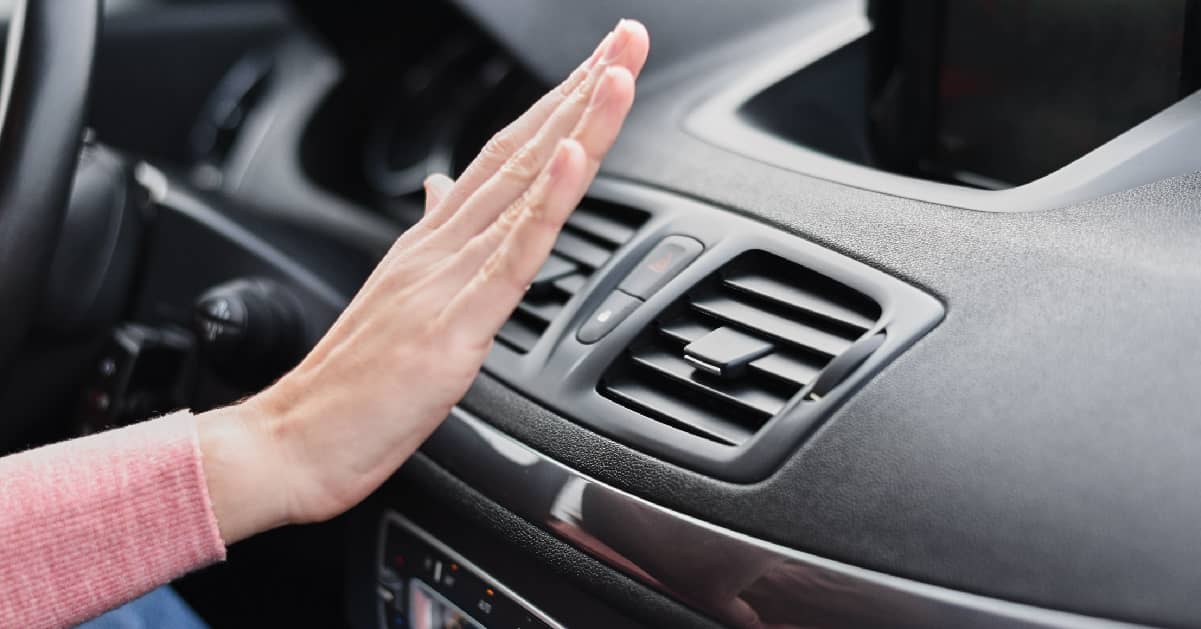
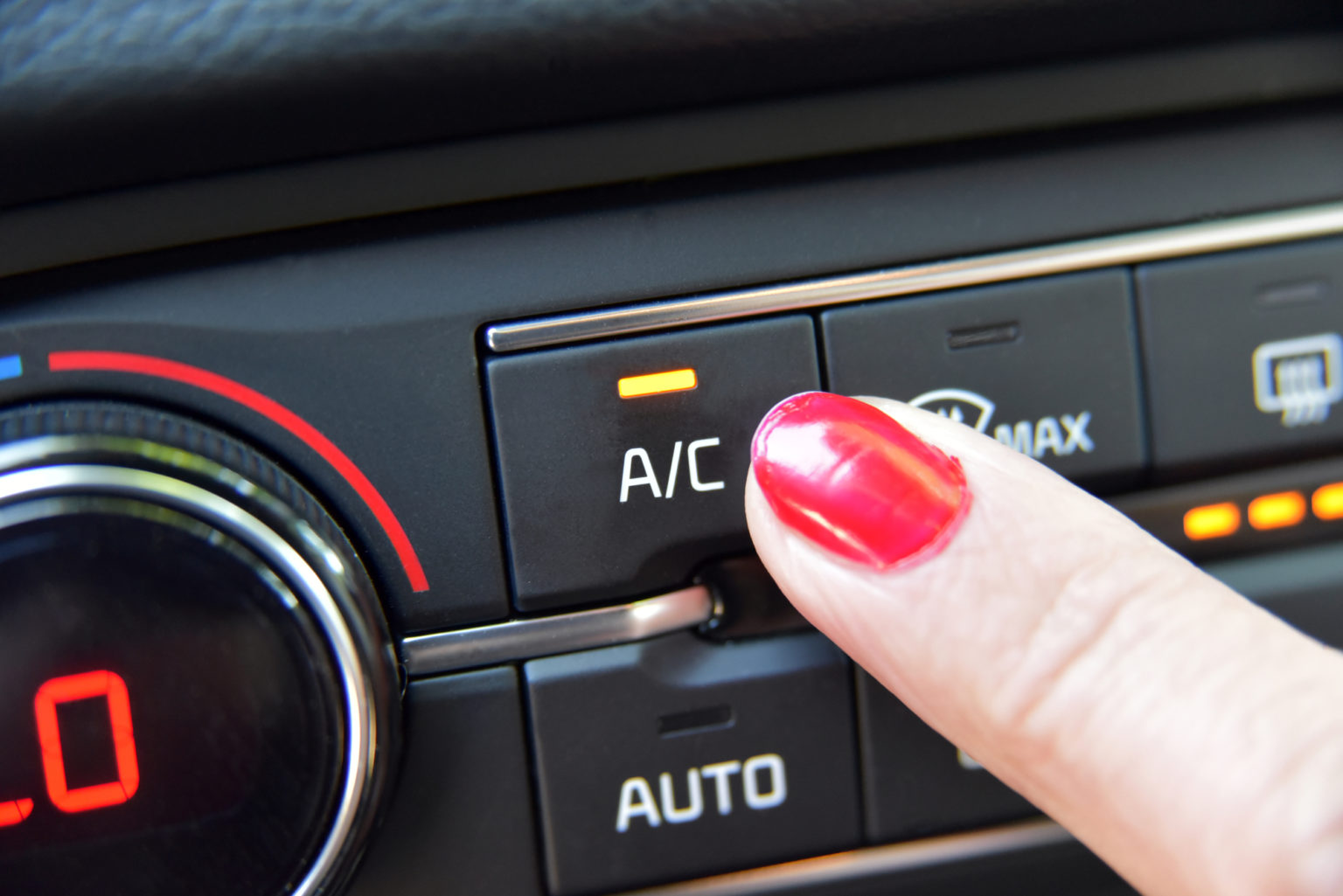

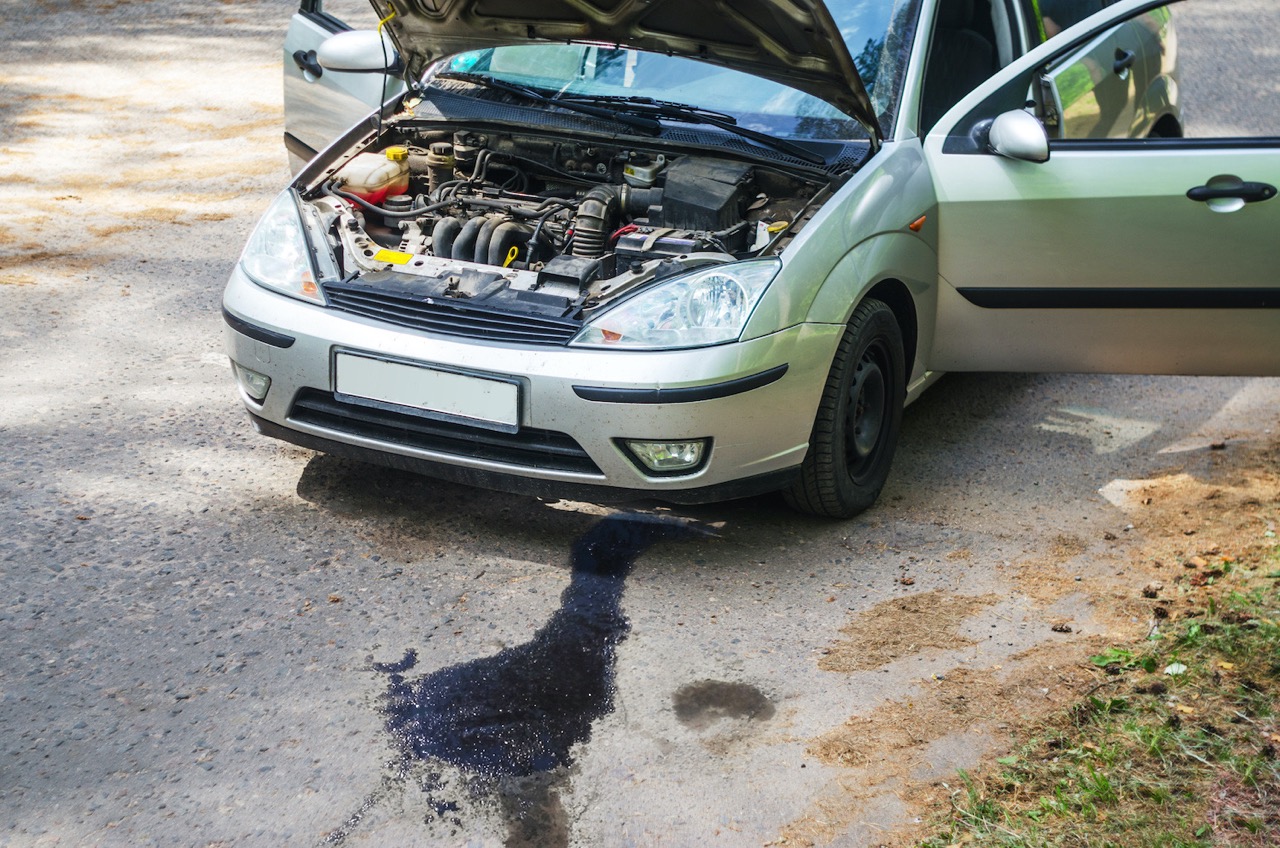





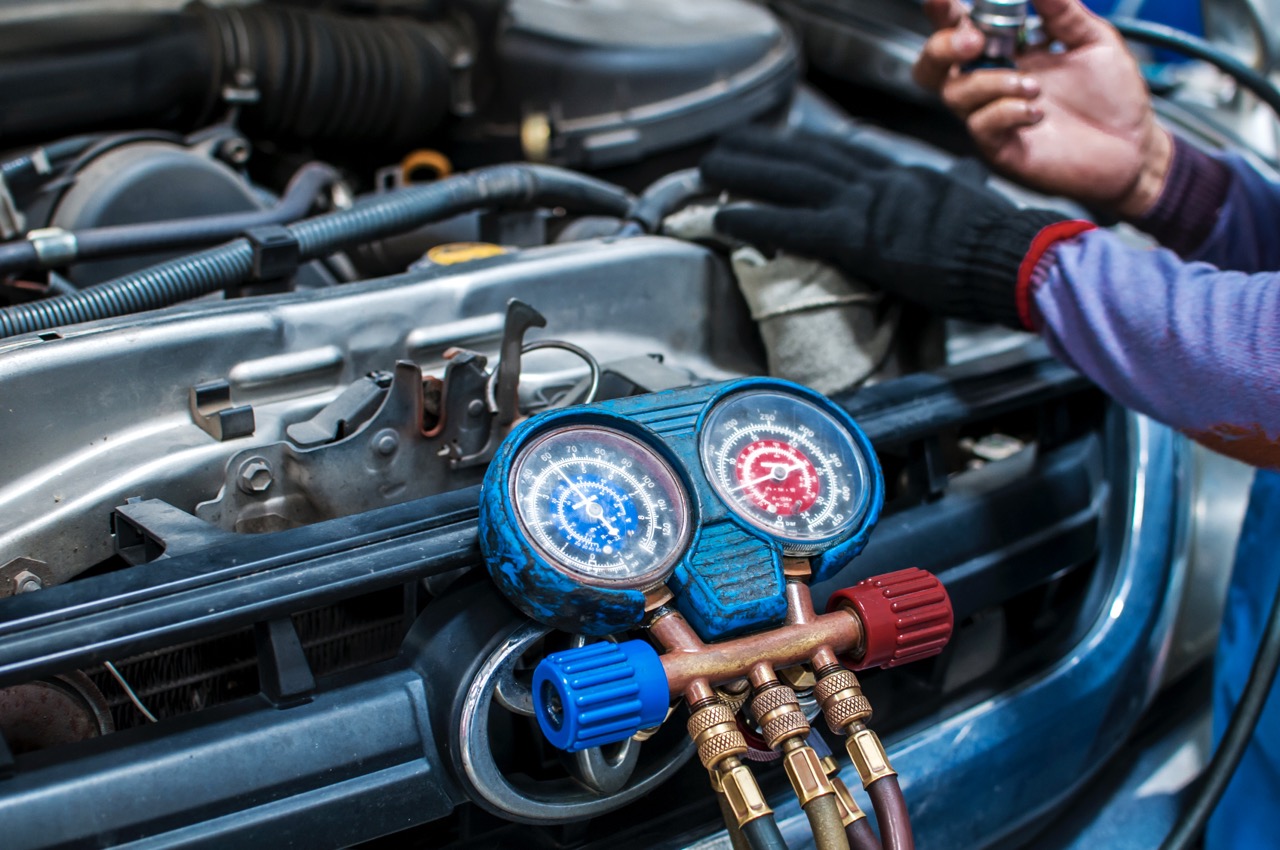
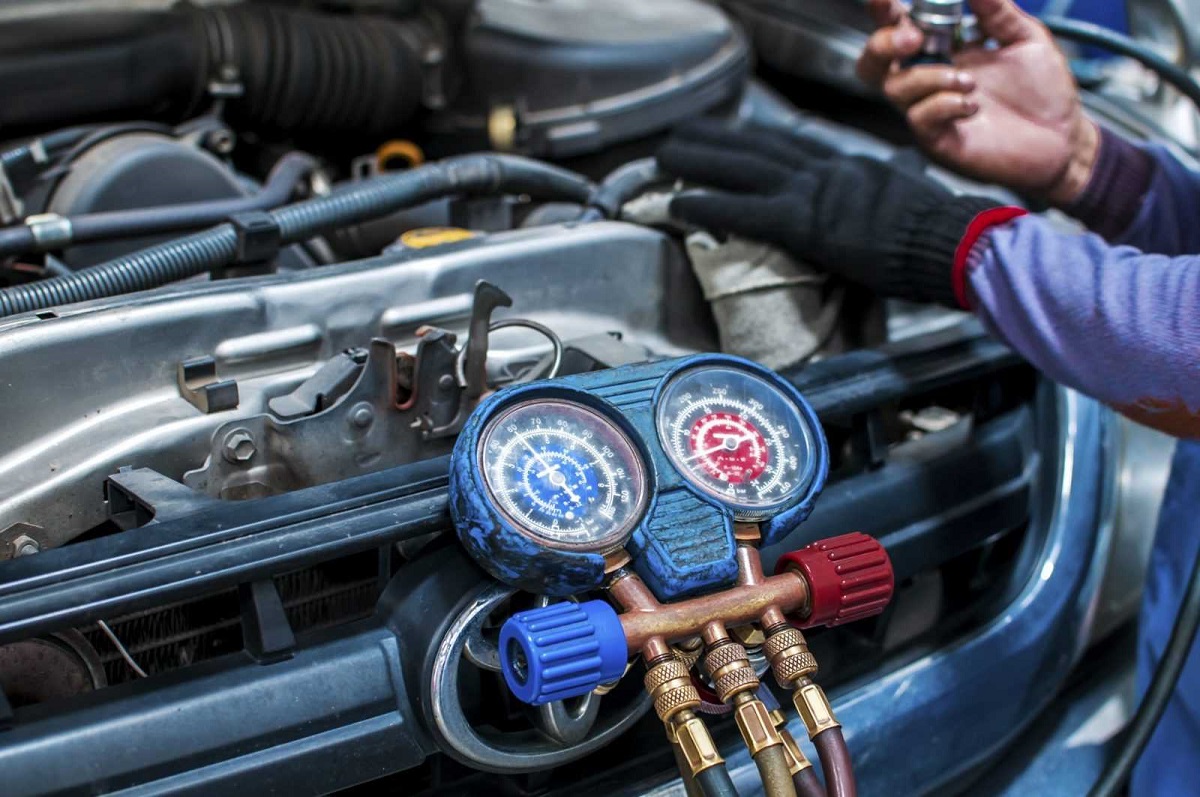
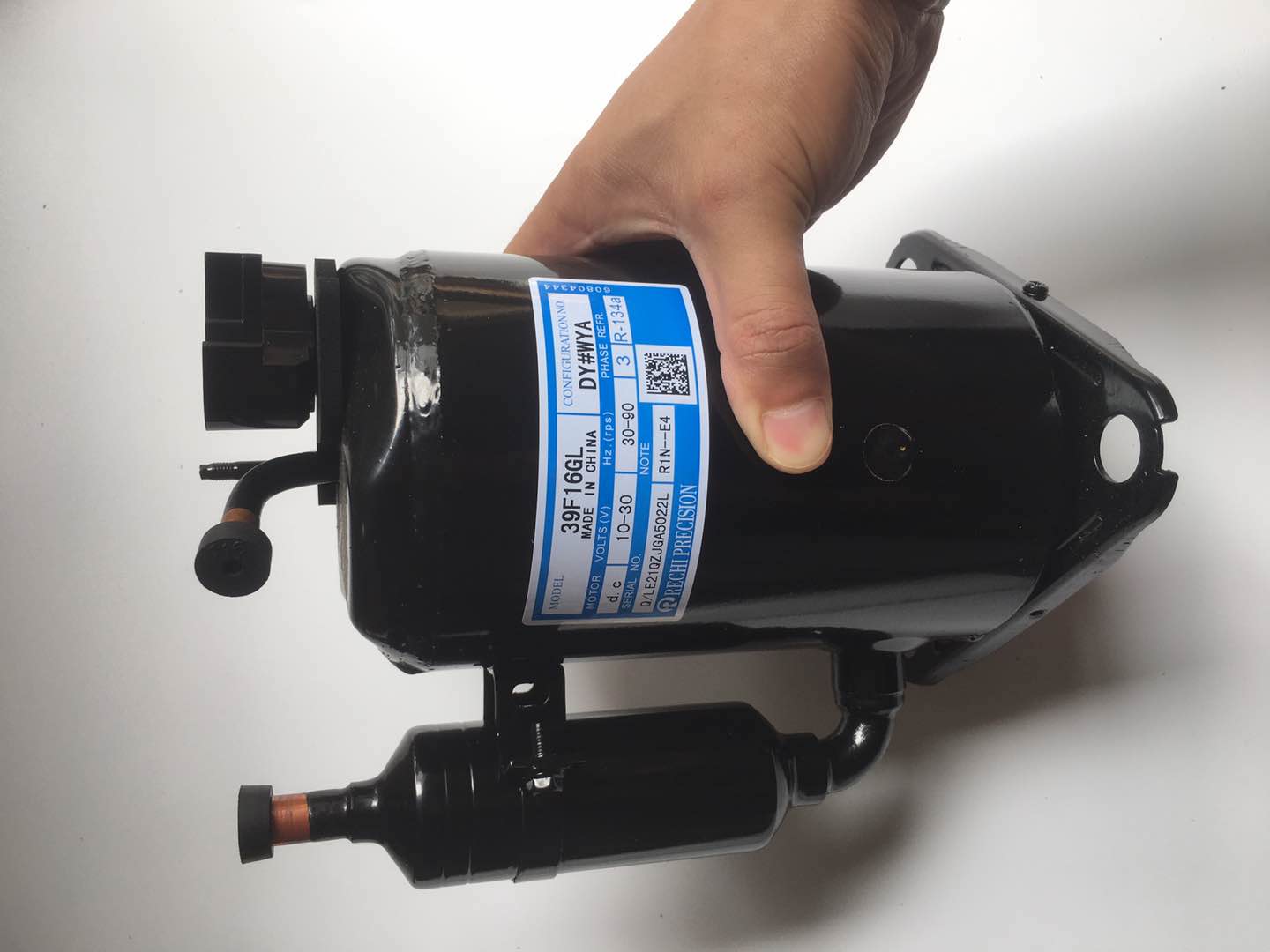

0 thoughts on “Car Squeals When AC Is On”